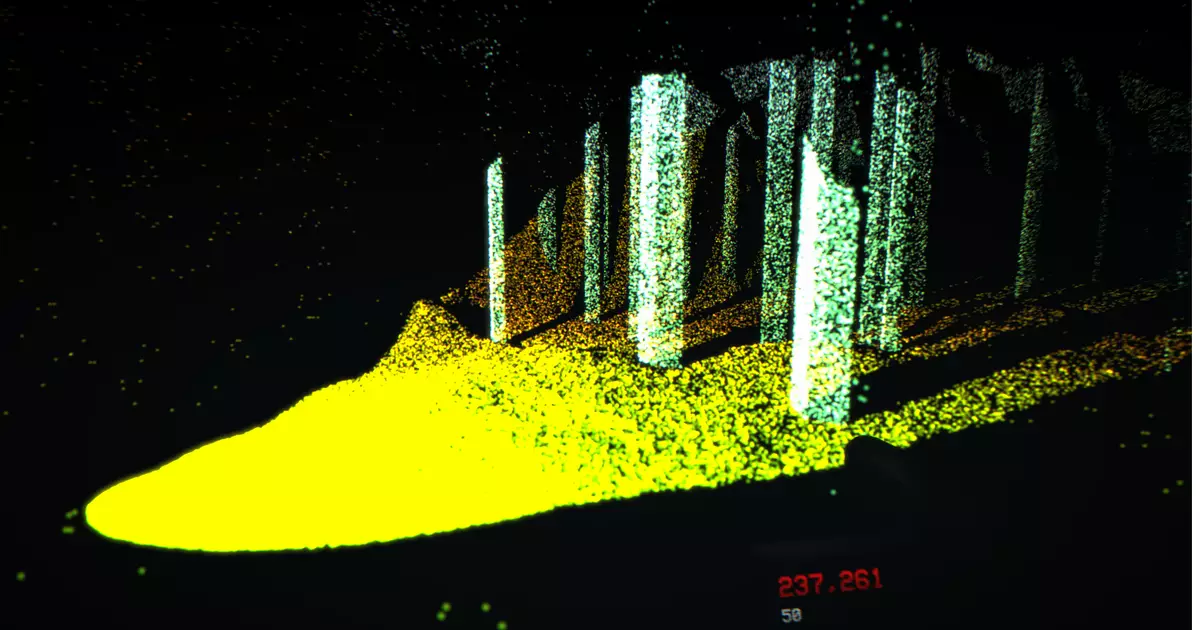LiDAR, an acronym for “Light Detection and Ranging,” is a sophisticated technology that operates on the principle of measuring distances using laser pulses. By directing these pulses toward an object and calculating the time it takes for the light to return, LiDAR creates precise 3D models of the surroundings. This method has proven invaluable in a variety of fields—scientists utilize it to explore remote cave systems or assess the ever-changing canopies of rainforests like the Amazon. Recently, however, its applications have begun to permeate the realm of art and gaming, resulting in an intriguing fusion of science and creativity.
Introducing the LiDAR Exploration Program
KenForest’s “LiDAR Exploration Program” invites players into an atmospheric world, where something akin to a handheld LiDAR scanner becomes both a tool and a protagonist. Rather than embarking on a traditional gaming quest, players find themselves immersed in a “chill atmosphere” that straddles the line between meditation and existential dread. As I veered into the demo available on Itch, it felt reminiscent of the zen-like experience offered by games like PowerWash Simulator, but with an eerie, spectral twist.
By engaging with this environment, players obtain the unique experience of recreating digital landscapes through a tangible yet abstract method. As I wielded the LiDAR gun, listing and inspecting objects within the mapped realms felt both therapeutic and unsettling. Rather than a fast-paced adventure, the game transforms the act of scanning and visualization into a meditative exercise, channeling a reflective state as one contemplates the visible and invisible aspects of the digital cosmos.
Artistry Intertwined with Unease
At its core, the LiDAR Exploration Program thrives on the striking contrasts inherent within its mechanics. The landscapes remain largely static, encouraging players to adopt a leisurely pace as they fully engage with each object and surface. However, the very nature of LiDAR implies limits—what one sees on the surface might conceal secrets underneath. This element of uncertainty cultivates an ambiance of eerie tension, reminding players that not all that is cast in light reveals its true essence.
As I manipulated the laser beams, I experienced the thrill of discovery, watching as the scenery emerged only to feel a sense of trepidation as hollowness took form. The scanner, functioning as the primary means to navigate the environment, often unveils elements better left unknown. The juxtaposition between visual clarity and the terror of the unseen creates an experience that lingers in the psyche long after gameplay ceases.
The Visual Symphony of Light and Shadows
What resonates deeply with me in the LiDAR Exploration Program is its appreciation for light as both a creative and destructive force. There’s an artistry in narrowing the beams, allowing for intricate detail to gradually surface. The careful examination of illuminated surfaces reveals the brutality of reality, as vibrant colors stand in stark contrast to lurking shadows in the depths of the pixelated forest. The game captures the essence of light not just as a tool for visibility but as a brush that paints both beauty and terror.
Throughout my digital journey, I found myself oscillating between player and artist—the act of scanning became an expression of creativity, a delicate dance between illumination and obscurity. The gameplay mechanics invite a profound understanding of the natural world, where light reflects on trees or skims the surface of tranquil waters, yet immediately gives way to the unknown lurking just beyond the edges of perception.
The Art of Discovery in Gaming
Ultimately, what makes the LiDAR Exploration Program special transcends traditional horror tropes and instead leans into nuance. It beckons players to slow down and engage with their environment on an artistic level, valuing light’s dynamic properties over conventional gameplay objectives. Unlike many contemporary offerings, this title gently reinforces that exploration need not be about urgency but rather about seizing the moment—about the art of discovery.
In a landscape filled with chaos and competition, this unique approach cultivates a serene space for reflection and creativity. For gamers and art enthusiasts alike, the LiDAR Exploration Program offers a fresh lens, urging players to ponder the world around them and the shadows that lie beneath the surface, waiting for a ray of light to unveil their secrets.

